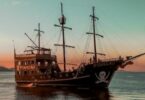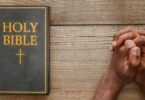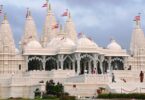General Islamic Knowledge Quiz:
“Waqf” means…
(a) Maintenance
(b) Consideration
(c) Mahr
(d) Donate
In what year did the Islamic Revolution take place in Iran?
(a) 1971
(b) 1979
(c) 1989
(d) 1997
Which city is known as the holiest site in Islam?
(a) Jerusalem
(b) Doha
(c) Mecca
(d) Riyadh
Mohmmad Paygambar was born at ____?
(a) Mecca
(b) Madina
(c) Lahore
(d) Dakha
Originally, who were called the ‘New Muslims’?
(a) Hindu converts to Islam
(b) Mongol converts to Islam
(c) Turkish converts to Islam
(d) Persian converts to Islam
Traditional Talaq means …
(a) Talak-ul-Biddat
(b) Talak-ul-Ahsan
(c) Talak-ul-Sunnat
When Mahmmad Paygambar left Mecca for Madina?
(a) 621 A.D.
(b) 622 A.D.
(c) 722 A.D.
(d) 632 A.D.
Related: basic concept of Democracy
Divorce by mutual consent can be known as..
(a) Ila
(b) Mubarat
(c) Khula
(d) Zihar
Message of God sent to Mahmmad Paygambar for the very first time through ____?
(a) Habib
(b) Suleman
(c) Grabiyal
(d) Yakoob
During whose reign was Islam abolished as a state religion in India?
(a) Babur
(b) Shershah
(c) Akbar
(d) Shahjehan
Which North African city is famous for its medieval Islamic architecture?
(a) Cairo
(b) Algiers
(c) Marrakech
(d) Fez
What makes Ibadi Islam different from Sunni and Shia Islam?
(a) It does not include daily prayers.
(b) It emphasizes a strict hierarchy of clergy.
(c) It believes in the importance of consensus in leadership.
(d) It has its own religious calendar.
How many Ayats are there in The Quran?
(a) 7236
(b) 6666
(c) 6327
(d) 6236
Related: Jain quiz with question and answer
What is the city, founded in thenth century AD and for more than 400 years a significant cultural, commercial, and intellectual centre for the Islamic world until it was destroyed by the Mongols in 1258?
(a) Isfahan, Iran
(b) Mosul, Iraq
(c) Baghdad, Iraq
(d) Aleppo, Syria
During which Islamic month does the Hajj pilgrimage take place?
(a) Ramadan
(b) Dhul-Hijjah
(c) Sha’ban
(d) Muharram
Out of the Total Ayats of The Quran, how many have legal principles?
(a) 300
(b) 500
(c) 200
(d) 400
Sufism the liberal and mystic movement of Islam, reached India in the ____ century?
(a) 11th
(b) 12th
(c) 14th
(d) 13th
In what year did Prophet Muhammad receive his first revelation?
(a) 610 CE
(b) 622 CE
(c) 632 CE
(d) 650 CE
What is First source of Muslim Law in India?
(a) Sunna & Hadis
(b) Ijmaa
(c) Quran
Related: Europe countries and capitals quiz
The Pearl Mosque (Moti Masjid) was built by
(a) Shah Jahan
(b) Aurangzeb
(c) Humayun
(d) Akbar
Which one of the following sources Meaning of Tradition ?
(a) Sunna & Hadis
(b) Qiyas
(c) Ijmaa
(d) Custom
Which caliphate was founded by Ali ibn Abi Talib?
(a) Umayyad Caliphate
(b) Abbasid Caliphate
(c) Rashidun Caliphate
(d) Ottoman Caliphate
The migration of the Islamic prophet Muhammad and his followers from Mecca to the city of Medina in 622, which marked year one of the Islamic calendar, was known as what?
(a) Hijra
(b) The Great Trek
(c) Muharram
(d) The Trail of Tears
In which source in Muslim Law, ‘Thought of Future’ expressed?
(a) Qiyas and Quran
(b) Ijmaa and Qiyas
(c) Hadis and Ijmaa
(d) Ijmaa and Sunna
Related: Buddhism Religion Questions / Answers
It is believed that which building stands on the site of temples built successively by Micah, Zerubbabel and Herod in Jerusalem?
(a) The Good Shepherd Hotel
(b) The Mosque of Omar
(c) Basilica of the Knights Te
(d) Ibn Marwan Mosque
How many kinds of Ijmaa are there?
(a) 2
(b) 3
(c) 4
(d) 5
Who was the first female Muslim ruler?
(a) Khadijah bint Khuwaylid
(b) Aisha bint Abu Bakr
(c) Zubayda bint Ja’far
(d) Arwa bint Ahmed
The Muslim leader Saladin recaptured which city from the Crusaders in 1187?
(a) Baghdad
(b) Constantinople
(c) Jerusalem
(d) Troy
When did Mohmmad Paygambar die?
(a) 632 A.D.
(b) 640 A.D.
(c) 622 A.D.
(d) 630 A.D.
Related: top 10 Religions in the world
Where is the World’s Largest Mosque?
(a) Pakistan
(b) Iraq
(c) Saudi Arabia
(d) Iran
In what year did the Battle of Tours take place?
(a) 632 CE
(b) 711 CE
(c) 732 CE
(d) 762 CE
Which branch recommends election for the post of Mahmmad Paygambar after his death?
(a) Shia Branch
(b) Sunni Branch
(c) Maliki Branch
Divorce by mutual consent can be known as …
(a) Khula
(b) Ila
(c) Zihar
(d) Mubarat
Which branch recommends that hairs are sources of Mahmmad Paygambar after his death?
(a) Shia Branch
(b) Sunni Branch
(c) Maliki Branch
Related: Classification Reasoning questions and answers
Dangerous comparison means …
(a) Zihar
(b) Ila
(c) Khula
How many sub branches of Sunni?
(a) 2
(b) 3
(c) 4
(d) 5
Which Islamic empire ruled over Spain from 711 to 1492?
(a) Ottoman Empire
(b) Umayyad Caliphate
(c) Abbasid Caliphate
(d) Mughal Empire
Jama Masjid in Delhi was built by
(a) Humayun
(b) Sher Shah
(c) Shah Jahan
(d) Aurangzeb
How many sub branches of Shia?
(a) 3
(b) 4
(c) 5
(d) 6
Related: Movie quiz questions and answers
The Islamic religion came to India a century ago.
(a) 12
(b) 13
(c) 10
(d) 8
Jabar means …
(a) Puberty
(b) Marriage
(c) Guardianship
(d) Minor
Who was the founder of the Fatimid Caliphate?
(a) Ali ibn Abi Talib
(b) Umar ibn al-Khattab
(c) Muhammad al-Mahdi
(d) Abd Allah al-Mahdi Billah
Under pressure from authorities in Mecca, Muhammad and his followers fled to Medina in 622. Muslims call this move
(a) Yathrib
(b) The hijra
(c) The hajj
(d) The umra
The greatest Muslim Art in which they have achieved incomparable success is
(a) Paintings
(b) Architecture
(c) Calligraphy
Related: quiz about America
The hajj
(a) is one of the Five Pillars of Islam
(b) brought Muslims from disparate parts of the world together
(c) ends at the Ka’ba in Mecca
(d) contributed to the spread of Islamic beliefs and values
The nature of the society into which the prophet Muhammad was born was
(a) An urban-based culture with small manufacturing
(b) A strictly disciplined military society
(c) An agricultural society dominated by warriors
(d) A society made up largely of nomads and merchants
What was the name of the Islamic scholar who wrote the “Muqaddimah”?
(a) Ibn Khaldun
(b) Ibn Rushd
(c) Al-Farabi
(d) Al-Ghazali
The Grand Mosque at Damascus was built by
(a) Abdul Malik
(b) Waleed
(c) Umar bin Abdul Aziz
Which of the following is not correct in describing cultural influences on Islam?
(a) Persian literature deeply influenced Islamic literary works.
(b) Indian numerals had a profound influence on the development of mathematical thinking among Muslims.
(c) The caliphs adopted Persian ideas of kingship
(d) Greek rational reasoning had a long-lasting influence on the theological development of Islam.
Related: Counseling Psychology MCQs
For the first time, Abdul Malik issued purely Muslim Coinage Know as:
(a) Pound
(b) Deenar
(c) Dirham
(d) Ruppe
In which country is Karabla, the holy city of Shia Muslims located ?
(a) Iran
(b) Iraq
(c) Jordan
(d) Syria
The literal meaning of Jihad is
(a) exemption
(b) sacrifice
(c) fight
(d) struggle
Rulers of Pre- Islamic Iran were called:
(a) qaiser
(b) kisra
(c) shahan- shah
(d) noisra
The pre- Islamic era is known as:
(a) Modern age
(b) Age of ignorance
(c) Golden age
Related: united nations quiz
Islam was established in
(a) 7th A.D.
(b) 5th A.D.
(c) 3rd B.C.
(d) 5th B.C.
Which of the following is true of Sufi’s history?
(a) They sought an emotional and mystical union with Allah
(b) They used emotional sermons and song and dance to encourage devotion
(c) They tolerated observances of some non-Islamic customs
(d) All are correct
Which Islamic empire was founded by Timur the Lame?
(a) Mughal Empire
(b) Safavid Empire
(c) Ottoman Empire
(d) Timurid Empire
Ulama and qadis were important in Islamic society because they
(a) developed public policies and heard cases in accordance with the Quran and sharia
(b) were learned priests in the roles of magistrates and judges
(c) was part of the military arm of Islam, responsible for its expansion






